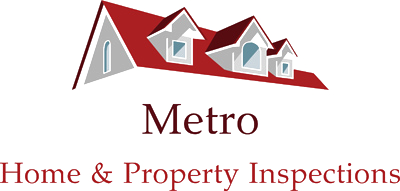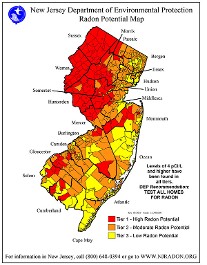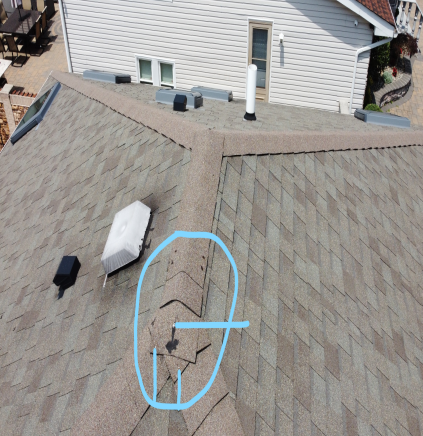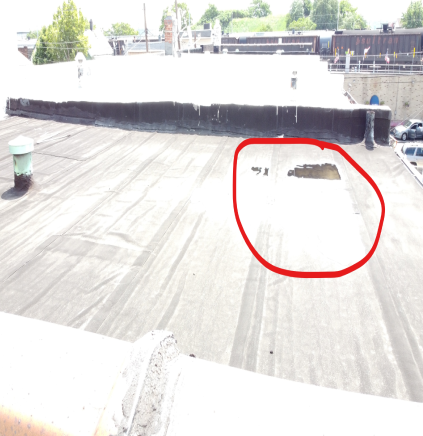Offering Full service home inspections.
- Environmental Services
- Mold
- Radon
- Lead in Paint
- Attic
- Bathrooms
- Water Leak Protection
- Kitchens
- Basement/Crawlspace
- Heating Systems
- Garage/Carport
- Site Grounds Grading
- Exterior Structure
- Thermal Imaging
- Roofing Components
- Plumbing System
- Electrical
- Air Conditioning
- New Construction
SEWER SERVICE - SERVICING THE NEW JERSEY AREA
EIFS (EXTERIOR INSULATION AND FINISH SYSTEMS)
Why Are EIFS Bad?
New EIFS systems are built better than before. Traditional EIFS with no drainage capabilities, old EIFS systems tended to harbor moisture, leading to a range of water-related problems……. Exterior Insulation and Finish Systems (EIFS) earned a bad rap in the 1980s and ’90s.
WHAT IS THE DIFFERENCE BETWEEN TRADITIONAL STUCCO AND EIFS?
A traditional hard-coat Stucco exterior System is extremely strong and durable because it essentially covers your home with a layer of rock…… Barrier EIFS on the other hand uses a multi-layer “synthetic” stucco that is much softer than traditional stucco.
Are EIFS Waterproof?
It’s normal for exterior walls to have moisture within them, and most are designed to let water escape or dry. However, once water gets behind the EIFS, it has a difficult time getting out… EIFS is not a do-it-yourself product.
A Brief History of EIFS
Synthetic Stucco was developed in Europe in the 1930s and following the development of expanded polystyrene, E.I.F.S. was used widely in the rebuilding of Europe after World War II. The Dryvit Co introduced E.I.F.S. into North America in 1969 using the name Outsulation and the system gained popularity with the energy crisis of the 1970s. 1995 a class action lawsuit was filed in Wilmington North Carolina against the E.I.F.S. industry due to water penetration into hundreds of homes with E.I.F.S. cladding. The ensuing investigation revealed several defects in E.I.F.S. design and installation, particularly at the terminations of the E.I.F.S. cladding and through-wall penetrations. These E.I.F.S. terminations and through-wall penetrations remain the typical areas of failure on E.I.F.S. cladding. Once the water has penetrated the E.I.F.S. cladding it will follow the path of least resistance through the wall assembly which oftentimes will result in water penetrating the interior of the structure. E.I.F.S. with drainage was developed in 1993 to accommodate incidental moisture penetration behind the system and allow a drainage pathway or plane for moisture to the exterior of the wall assembly.
When designing an E.I.F.S. wall assembly one should take into consideration the climate, local seasonal weather conditions, and exposure of the structure to wind and rain. The Northeast coast is often considered a maritime climate with wind-driven rain occurring frequently. This highlights the need for proper use of sealants, flashing, and caulking. The use of a drainage plane to accommodate moisture penetrating the cladding is recommended:
How Exterior Insulation and Finish Systems Work:
Exterior Insulation and Finish Systems (EIFS) installation can be technically challenging, sometimes making the cons overshadow the plusses. Installation problems are due in part to manufacturers' systems all being different: Different systems require different installation techniques. EIFS is either assembled in panels in a warehouse and shipped to the construction site or assembled and installed in the field. Contractors do the installation, so the builder is responsible for finding someone skilled at installation, which can be difficult. Inexperienced workers plus fast-tracked construction can equal compromised EIFS products that leak -- one of the many things that can go wrong during installation.
It's normal for exterior walls to have moisture within them, and most are designed to let water escape or dry. However, once water gets behind the EIFS, it has a difficult time getting out. If EIFS fails its waterproof claim and leaks, it can be extremely difficult to identify who is responsible since several people contribute to the integrity of the system: Homeowner, manufacturer, supplier, builder, installer, electrician, roofer. In fact, it's common for insurance companies to add full exclusions and other rule-out provisions to their liability insurance policies for this reason. The EIFS Industry Member's Association (EIMA) says reputable distributors don't sell to the public because EIFS should be installed by a trained professional, not an unskilled homeowner. EIFS is not a do-it-yourself product. Homeowners who have tried to do it on their own have ended up with problems like leaks and holes or worse. The situation has led to a flurry of class-action lawsuits; homeowners who've done their own installation end up suing manufacturers, distributors, builders, and any number of people who have participated in the EIFS process. Sometimes building codes disallow the use of EIFS, but residential projects generally have looser standards, making them more vulnerable to EIFS glitches. It may be because of these disadvantages that EIFS is more popular among commercial construction than residential projects, citing one out of every 11 commercial buildings in the United States has EIFS on it (source: DryVit).
ABSTRACT:
Stucco and EIFS are common cladding systems that appear similar to the exterior. these systems have very different attributes, however. This digest explains the reasons why face-sealed EIFS are fundamentally flawed as cladding systems for most applications and describes how drained EIFS can be used successfully in almost all climate zones and exposures. Cracks, lamina deterioration, and movement joints are also discussed.
EIFS AND STUCCO:
EIFS (Exterior Insulation and Finish Systems) are cladding systems that combine a finish with a layer of exterior insulation. The finish is comprised of polymeric (organic) bonded aggregate and cement reinforced with a glass mesh. Stucco is a cladding made of inorganic-cement (Portland Cement and/or Lime) bonded sand or earth used for thousands of years. Although these two claddings may look the same, they perform very differently.
PROBLEMS:
EIFS became very popular in the 1980s and experienced a significant number of serious failures, almost all related to rain penetration. Early EIFS used a face-sealed approach (defined later). Face-sealed exterior insulation and finishing systems (EIFS) are inherently defective and unfit for use as an exterior cladding system where moisture sensitive components are used without a provision for drainage or in locations and assemblies without adequate drying. Most EIFS of the past were face-sealed systems that by definition had no provision for drainage. The typical system also contains moisture-sensitive materials. Specifically, the following moisture-sensitive components are used: exterior gypsum boars, oriented strand board (OSB) or plywood sheathing, metal or wood studs, fiberglass cavity insulation, and interior gypsum board sheathing.
Drained EIFS are significantly different from face-sealed systems in that, by definition, they have a provision for drainage. unlike face-sealed perfect barrier systems, such systems can be successfully used as an exterior cladding system in essentially all climates and exposures. Drainable EIFS are not subject to the same limitations of uses as face-sealed or barrier systems. In fact, drainable EIFS are among the most robust and advanced moisture control assemblies available.
Protect Your Family from Radon Exposure
Long exposure to radon gas can be hazardous to you and your family’s health. As such, Metro Home & Property Inspections is located in Staten Island, NY, and offers radon testing at a minimal fee. Our team can provide this service separately or as an extra service along with your whole house inspection.
The Maps Show Radon Gas Levels Throughout NY & NJ
Specialized Radon Testing
Recent studies of human exposure to both high and low levels of radon have shown an increased occurrence of lung cancer and other illnesses. Next to cigarette smoking, Radon Gas is the 2nd leading cause of Lung cancer. There are an estimated 21,000 deaths per year attributed to the gas. Unfortunately, because radon gas is colorless, odorless, and tasteless, the only way to measure it is through the use of proper testing devices. For this reason, Metro Home & Property Inspections offers radon mitigation tests at your convenience. Our specialists conduct a series of assessments to measure the level of radon in your home, and the result is then evaluated to determine if any form of improvement is needed. For accurate results, the measurements taken are then sent to the lab for more testing.
Health Hazards of Radon
Radon gas is actually a byproduct of the radioactive decay of uranium and radium, generated by the differences in air pressure and temperature between the home and the air outside. Radon is found abundantly in soils and enters homes through basements, crawl spaces, and cracks in foundations. This means that the mere circulation of air vented from homes by natural or electronic ventilation can create this type of gas. Low levels may not pose much threat, although high levels have shown to raise the risk factor of individuals developing lung cancer in the future. It can also cause respiratory problems in children.
Oil Tank Sweep
There are two steps involved when performing an Oil Tank Sweep. The first step is a comprehensive visual search of the interior for an underground oil tank. We look for where the furnace is or was for any copper fuel distribution lines. These lines are usually a pair, a return, and a feed line. Finding these lines if they exist gives us a good idea on where to start our outside sweep by which the direction these two lines run
In the next step, we then perform the exterior inspection of the property by doing a magnetic survey. This step is completed by walking the entire property using a Flux-Gate type Magnetometer. The Magnetometer utilizes two sensors that detect the magnetic field generated by Ferromagnetic objects. This device scans the ground for any underground metal anomalies and vent pipes or fills pipes. If any areas of concern are detected they are then documented and marked for an exploratory dig at a later date.
Oil Tank Sweeps are not mandatory but in the event, there is one present and not seen by you at the time of your purchase, it can be very costly to remove, especially if the oil is still present inside the tank. Performing the Oil Tank Sweep is one of the best investments you can make along with a Sewer Inspection. Some mortgage lenders require that you have it done so they are sure the property is clean. Properties in the past have been foreclosed on because of a UST (Underground Storage Tank).
As a buyer, you must protect your investment. Spending the extra couple of dollars is worth the cost. Please do not rely on what the current homeowners are saying. If there is a tank on the property and you do not perform the inspection, you are now financially responsible to have it removed. County records are also not reliable. they may say that a tank is present but the homeowner could have removed the tank without purchasing a permit.
Drone Inspections
When a home inspector performs a home inspection, there are certain rules that they must follow that fall in the “Standards of Practice”. As a part of the Home Inspector “Standards of Practice”, we are not mandated to climb on each and every roof of the homes we inspect. We are only obligated to carry a certain size ladder and if the roof is too steep and dangerous we do not have to climb them. When these issues arise, we do the best we can to examine the roof with binoculars and zoom cameras and to check for water leaks from the attic. These situations can leave a new home buyer somewhat vulnerable to problems. Here at Metro Home and Property Inspetions, we go the extra mile and employ our Drone so that we can give the new home buyer as much protection as possible with our eyes in the sky. The photos below were of those similar situations and you can see what we found.
Pool Inspections
Hydro Jetting
More information on this section coming soon!
